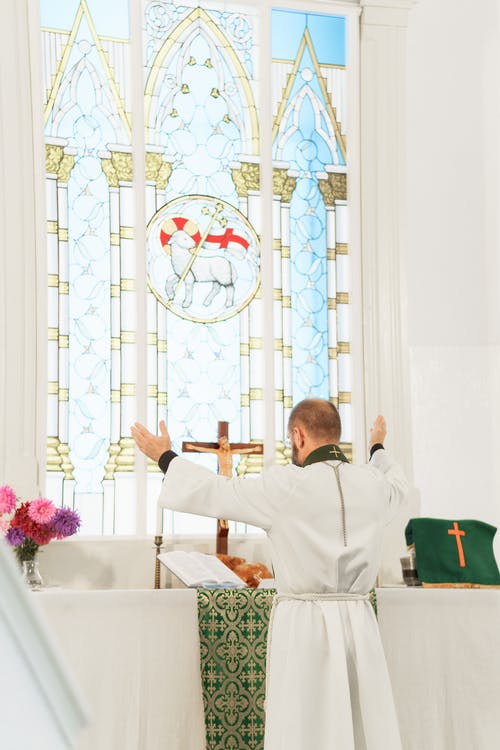The ceremonial robes and garments that priests wear during mass and other religious events are commonly referred to as vestments. Vestments are commonly steeped in historical significance and symbolism, and the chasuble is no different.
What Is The Chasuble?
If you have attended mass then you will have seen a chasuble, maybe without even knowing it. The chasuble is the large poncho-like garment that is worn over the priest’s other clothes, usually loose and flowing, sometimes colourful and often embellished with beautiful artwork depicting sacred images and holy references. It is seen across churches worldwide.
Origins
The chasuble has fairly humble beginnings, several historical texts cite the chasuble to have originated from protective ponchos or rain coats that ancient Roman farmers used to protect themselves from the elements. Priests of the roman empire would adorn the poncho prior to mass, and became so commonplace that by the third century B.C. it had become associated with the priesthood.
Eventually, around the eighth century B.C. the chasuble was wholly reserved by the church to be worn by priests, and began to be woven from finer fabrics and adorned with sacred symbols, reflecting its new and more sacred function. When the sacred cloth was adopted by the church, it was a piece that was large and grand – often priests required assistance whilst wearing it due to the voluminous folds of fabric. This began to be cut back to aid functionality – and while has passed through several shapes and styles over the years has become what we know today.
Symbolism
The colour of the outer clothing represents the current celebration for the liturgical calendar – purple for advent, white for Easter etc… and is often decorated with religious symbols such as crosses and doves, although they come in a wide variety of styles and colours which can be found at vestment.co.uk.
Representing the bond between the priest and Christ during mass, the chasuble is also seen as a symbol of charity. It is referred to as the “Yoke of Christ” and serves to remind the priest that he is representing Christ during the mass.
Further accentuating the bond between the priest and Christ, the chasuble also represents the garment that Christ wore as he was led to his crucifixion, bonding the service of mass and the priest with the sacrifice of Jesus.
To conclude, the chasuble is a beautiful and ancient garment which has adorned masses for millennia, so the next time that you go to mass you’ll know a little more about what the priests wear, and the stories behind what makes them so sacred. If you find this post interesting, discover also the Judas Priest here.


